Our research spans a broad range of topics in quantum materials, including topological phases, high-temperature superconductors, frustrated magnets, multiferroics, and thermoelectric materials. In particular, we are interested in tuning materials properties by chemistry, pressure, and magnetic field. To study the electrical properties of materials, we use a complete array of transport measurements including electrical resistivity, Hall effect, thermal conductivity, thermal Hall effect, Seebeck and Nernst effect.
Materials
A combination of geometric frustration, intermediate correlations, strong spin-orbit interactions, local f moments, and itinerant d-electrons in these complex materials gives rise to their rich physics. By decreasing the size opyrochlore.jpgf the rare earth element in the chemical composition of pyrochlore iridates R their electric transport behavior varies from the insulator to metal as a result of bond angle tuning. I have shown the same insulator to metal transition in one of these compounds Eu2Ir2O7 using hydrostatic pressure as the tuning parameter. Eu2Ir2O7 has a metal to insulator transition (MIT) at Tc = 115 K at ambient pressure. As I have increased the pressure, using a diamond anvil cell, this metal to insulator transition temperature shifted down and eventually vanished at a critical pressure Pc = 6 GPa where an insulator to metal quantum phase transition has occurred. One of the intriguing aspects of this transition is that while the insulating gap (25 meV) closes under pressure at Pc, the MIT transition temperature Tc does not change with pressure. The high-pressure semimetal may be the Weyl phase which is a topological semimetal with an even number of Dirac cones. Weyl fermions are the solution to the Dirac equation with zero mass. Since the number of Dirac points in the first Brillouin zone of a Weyl semimetal (WSM) is even, it can break time-reversal symmetry which is not allowed in topological insulators with an odd number of Dirac points.
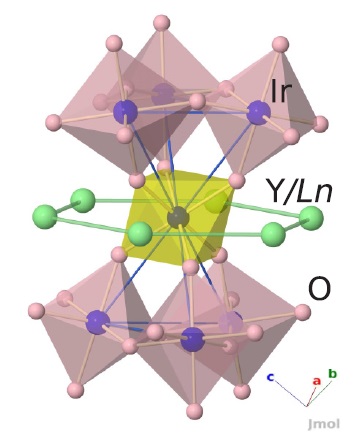
Discovering universal trends that do not depend on details of a specific material are of great importance in condensed matter physics. I have discovered a universal V-shaped phase diagram for the pressure dependence of the supercoironpnictides.jpgnducting transition temperature Tc in AFe2As2 where A could be any of the Alkali metals: K, Rb, or Cs. As a function of pressure, Tc in AFe2As2 decreases initially until a critical pressure Pc, where it reverses direction and increases. Pc = 17.5 and 14 kbar for A = K, Rb, and Cs. Comparing the V-shaped pressure dependence of Tc in these three materials reveals a universal trend in which and are identical in AFe2As2 independent of the chemical composition and the structural parameters. My interpretation for the Tc reversal at Pc in AFe2As2 is a change of pairing state induced by pressure since the normal state properties such as inelastic scattering rate and the Hall coefficient do not show any abrupt anomaly as they pass through the critical pressure, this phase transition is most probably a change in the pairing symmetry of the superconductor.. Several recent theoretical works proposed close competition between d-wave and s-wave pairing in these fully hole-doped AFe2As2 systems. Our serial pressure experiments provide firm experimental ground to support these ideas. I also examined the pressure dependence of the critical field Hc2 in both RbFe2As2 and KFe2As2 and found a second universal property of the transition: a two-fold jump in the quantity at Pc in both compounds. Based on recent theoretical works, this quantity depends on the Fermi velocity and the gap structure. Hall effect measurements rule out any sudden changes of the Fermi surface parameters at Pc. Therefore, the two-fold jump originates from a change of the gap structure. I proposed that the transition at Pc is from a d-wave state to a sign-changing s-wave state. The universal features of this transition make it a generic feature of the alkali 122 iron pnictides. While it is widely accepted that multiband superconductivity is at the mercy of material specific parameters, our finding of universal features clearly challenges the current status quo.

Half-Heusler compounds have been long known for their thermoelectric properties. They have a simple XYZ composition and their band structure is beautifully tunable from the insulator to semimetal, to metal, to a superconductor. Recently, they have been proposed as candidate topological insulators and superconductors. The spin-orbit coupling can be boosted in these systems by choosing heavy elements such as Pt and Bi as the chemical constituents of their 111 ternary compositions. Superconductivity has been discovered in two members of this family: LaPtBi and YPtBi. I have discovered superconductivity in LuPtBi which has the maximum spin-orbit coupling strength, hence the most promising candidate for topological superconductivity amongst these band inverted semimetals. LuPtBi is also a noncentrosymmetric superconductor, similar to CePt3Si and CeIrSi3, except LuPtBi does not have any free f-electrons.
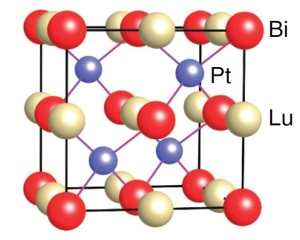
Understanding the organizing principle in the phase diagram of high-temperature superconductors is a question of recognized importance. Surprisingly, we still do not have a clear understanding as to why Tc has a dome-likcupratese doping dependence? A dominant view in the field is that the Tc dome is the manifestation of strong phase fluctuations on the underdoped side of the cuprate phase diagram. In this picture, the pairing strength and the upper critical field Hc2 continue to increase by underdoping but Tc decreases and forms a dome due to strong phase fluctuations that prevent long-range coherence in an otherwise paired electron fluid. I put this idea to scrutiny through a careful quantitative analysis of the superconducting fluctuations in the Nernst effect of the electron-doped cuprate PCCO. My observations contradict the phase fluctuation scenario and present a different explanation for the dome-like doping dependence of Tc: a scenario of phase competition. In the “phase competition” scenario, the decline of Tc by underdoping is due to the decrease of pairing strength as a result of competition between superconductivity and another order – in this case, antiferromagnetism. This hypothesis has three major consequences: first, a quantum critical point must exist at T = 0 separating the two different ground states that compete; second, superconducting fluctuations must be present in overdoped samples as well as in underdoped samples and must have a similar nature on both sides of the Tc dome; third, the upper critical field must decrease by underdoping as a result of diminishing pairing strength.

Pressure
Pressure is a clean tuning parameter which can be used to tune the lattice parameters, band structures, orbital overlaps, electron-lattice coupling, and magnetic interactions. Hydrostatic pressure is applied by placing a sample inside a pressure cell which is typically a piston-cylinder assembly that confines a hydrostatic pressure medium, the sample, and the leads. Two common types of pressure cells are Diamond anvil cells and clamp cells.
The main components of a diamond anvil cell (DAC) are two diamond anvils which are pressed against each other in a piston-cylinder mechanism. The pressure is exerted on a metallic disc, named “gasket” and placed between the two anvils. The sample (red spot) is contained inside a hole which is drilled at the center of the gasket and filled with the hydrostatic pressure medium (yellow fill). Diamond anvil cells work in the ultra-high pressure regime up to 50 GPa. Due to the extreme conditions inside the cell, the design and the operation of DAC requires a lot of experience. Examples of real cells are shown in the picture below. DAC allows for optical access to the sample. In the top left corner of the picture, you see a picture of FeCrAs sample at 17 GPa with the four contacts for the resistivity measurement. Next to it, you a picture of the gasket before pressurization with the sample inside the central hole and connected to the wires. Typical sample dimensions are ~ 200×100×20 μm and putting the four contacts on them is quite an art (top right panel).

Working at lower pressures is much easier with clamp cells. The sample is typically mounted on a feed-through and placed inside a Teflon cap filled with the hydrostatic pressure medium as shown schematically below. The maximum pressure attainable with a clamp cell is ~ 3 GPa. Compared to a diamond anvil cell, the maximum pressure is lower in a clamp cell but it can be tuned in much finer steps. The sample space in a clamp cell is much larger than DAC and sample dimensions are typically in the millimeter range. Due to the large volume of the sample area (Teflon cap) in a clamp cell, the pressure is more hydrostatic. Typical pressure media are Daphne oil 7474 and 7373, Pentane mixture, Ethanol/Methanol mixture, and Fluorinert mixture. Since the sample area is much smaller in DAC, we sometimes use liquid Argon or even liquid Helium as the pressure medium to ensure hydrostatic conditions.

Transport
Transport coefficients are linear responses of charge or heat carriers to external electric or thermal potentials. They come in two basic flavors: longitudinal and transverse. The latter is when the response is perpendicular to the external potential and is measured in the presence of a magnetic field. There are three types of transport coefficients: electrical, thermal, and thermo-electric as summarized in the figure.
Electrical resistivity (ρ) is when we apply an electric current through the material and measure the longitudinal electrical voltage. Hall effect is when we measure the transverse electric voltage in the presence of a magnetic field.
Thermal conductivity (κ) is when we apply a thermal current through the material and measure the longitudinal temperature difference. Thermal Hall effect is when we measure the transverse temperature difference in the presence of a magnetic field. Seebeck effect (S) is when we apply a thermal current through the material and measure the longitudinal electric voltage. Nernst effect is when we measure the transverse thermo-electric voltage in the presence of a magnetic field.
Typically, we perform these transport measurements at very low temperatures, near zero Kelvin in order to probe the true ground state of a material. For example, measurements of thermal conductivity need to be done at milliKelvin temperature range to reliably extract the residual linear term. Therefore, all the transport measurements above are usually mounted on either a dilution refrigerator or an adiabatic demagnetization fridge.

Facilities
Room 145 contains all the synthesis facilities including chemical storage, an argon glovebox, a nitrogen glovebox, muffle and tube furnaces, a vacuum furnace, arc melting system, gas control systems, fume hoods, optical microscopes, etc. This is the main workplace for our team where the magical discovery of new materials happens. All computers in this room are connected to BC cluster for materials computations using the full potential linearized augmented plane wave (LAPW) method.
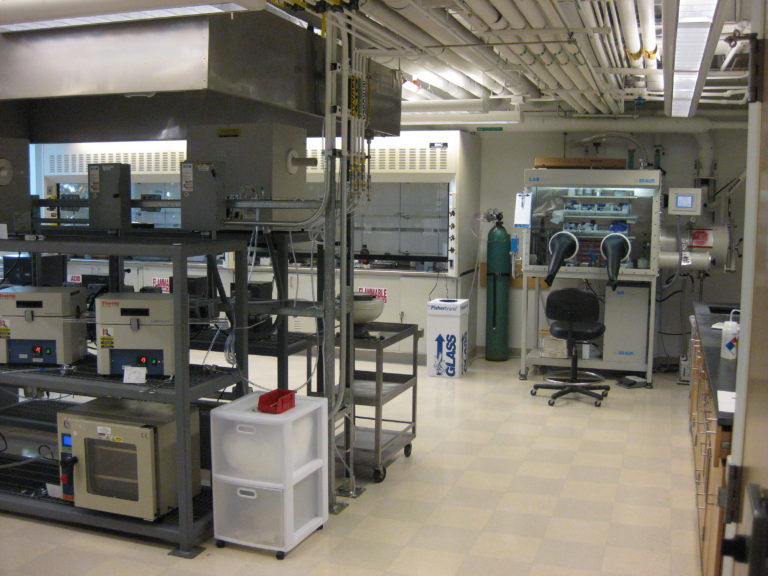
Our powder diffractometer, located in Room 157b, is a Bruker D8 ECO instrument with LYNXEYE XE detector. X-rays are produced by a 40 keV copper tube which is water cooled with an internal chiller. The state of the art detector records high-resolution and high counts diffraction data suitable for the careful structural analyses of complex solids. Complementary to the in-house diffractometer, we perform synchrotron and neutron diffraction experiments at various national laboratories such as the Powgen facility at Oakridge.
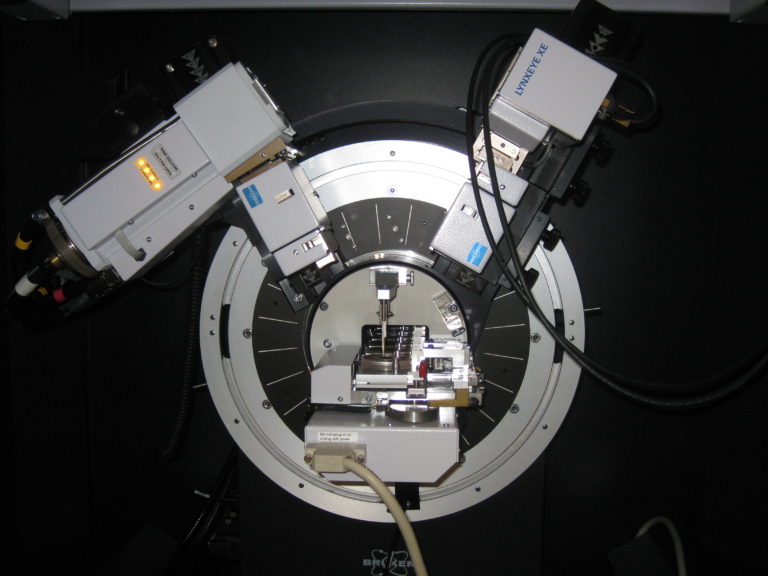
To measure the resistivity, Hall effect, heat capacity, and thermal conductivity of materials, we use a Quantum Design DYNACOOL system. The cryostat is capable of tuning the temperature between 2 and 400 K, and tuning the magnetic field between -9 and +9 T regularly with a closed cycle compressor which eliminates the use of liquid helium. The system is equipped with a high-resolution rotator to measure various transport coefficients as a function of field angle.
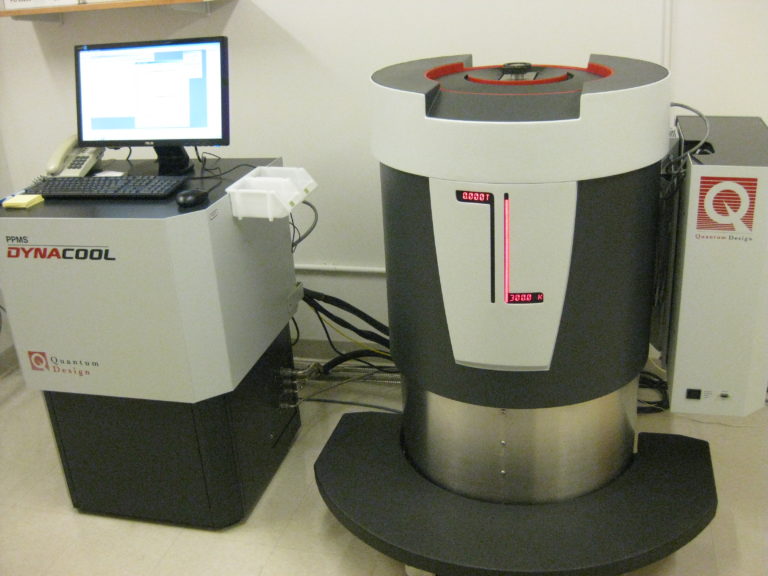
To measure the magnetic properties of materials, we use a Quantum Design MPMS3 located in room 110a. The cryostat is capable of tuning the temperature between 2 and 400 K, and tuning the magnetic field between -7 and +7 T to measure both DC and AC susceptibility. Our system is equipped with a Vibrating Sample Magnetometer (VSM) coupled with the SQUID system for a fast data acquisition with high resolution and low background. This system is also equipped with a rotator to measure magnetic properties as a function of field angle.

We use a JEOL field-emission scanning electron microscope (SEM) with nanometer resolution, 20 keV electron beam energy, and 12 μA beam current. Energy dispersive x-ray spectroscopy (EDX) is regularly performed with an EDAX detector installed on our SEM. We have fruitful collaborations with the Harvard Center for Nanoscale Systems (CNS) for various imaging and spectroscopic techniques including SEM, TEM, and XPS. We also have ongoing collaborations with materials scientists at Argonne national laboratory for measurements of the X-ray absorption near edge structure (XANES) and the edge X-ray absorption fine structure (EXAFS).
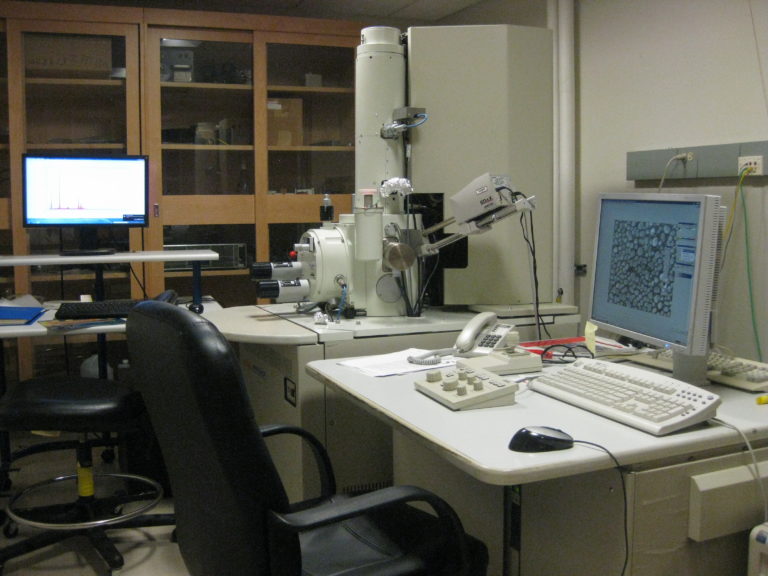
Mag Lab in Tallahassee
Our group regularly performs experiments at intense magnetic fields in the National High Magnetic Field Laboratory (MagLab) in Tallahassee. Specifically, we study the quantum oscillations of topological semimetals by measuring both the resistivity and torque magnetometry.

